around fuji
Hinoki cutting board (Japanese traditional cooking tool)
Hinoki cutting board (Japanese traditional cooking tool)
Couldn't load pickup availability

What are the advantages of Hinoki (Japanese cypress) cutting boards? I heard that once you use it, you become addicted to it.

Hinoki is fragrant and moderately soft. The blade of a knife bites into the board, making it easy to cut food. If you know how good it is, you will want to use it!
Hinoki, a tree indigenous to Japan
The Japanese cypress grows only in Japan and Taiwan. Gojū no tō, the Five-Storied Pagoda of Horyu-ji Temple, a World Heritage Site, is the world's oldest surviving wooden structure still standing after more than 1,300 years, and its pillars are also made of Hinoki.
Hinoki is known to have various effects such as sterilizing, controlling ticks, relaxing, calming, easing tension, and promoting blood circulation.
Hinoki cutting boards have been used as a traditional Japanese cooking tool.
Hinoki, with its moderate softness, is ideal for cutting boards, and from ancient times, cutting boards made of hinoki have been used in Japan for daily use. Even now, Hinoki cutting boards are widely used in Japanese homes and high-class restaurants.
The blade of a knife bites into the wood of the hinoki tree, making it easier to cut food. We recommend a cutting board made of Hinoki that can withstand hard use with a thickness of 3 cm, instead of a cutting board that pursues cost and lightness.

Yamanashi Prefecture, at the foot of Mt. Fuji
Yamanashi Prefecture, surrounded by Mt. Fuji and the Southern Alps. In Yamanashi, planting of Japanese cypress has been actively conducted since the Meiji Era (1868-1912). Now is the time when the cypress trees have grown up and it is time to cut and use them.
Hinoki from Yamanashi Prefecture is fragrant and its characteristic feature is its bright whitish color and beautiful grain.

One solid piece with no joints or laminated wood
The hinoki wood harvested in Yamanashi Prefecture is sawn into a single solid cutting board with no joints or glued joints. Each piece is handmade. No glue, paint, or oil is used.
You will love the aroma of the wood, the gentle touch of the wood, the softness of the knife's edge, and the sharpness of the food. Why don't you put a cutting board made of solid wood, which has been used in Japan for a long time, in your life?
Three sizes for ease of use
We have prepared L (large) and M (medium) and S(small) sizes of cutting boards. If you have enough space in your kitchen, we recommend you to use a cutting board as large as possible.
Please refer to the following for an image of the size.

Feature and merit of Hinoki cutting board
- Good wood aroma
- Good texture
- The sound of the knife is good
- Soft to the touch of the knife blade
- Easy to cut food such as vegetables with skin, chicken, etc.
- Even if damaged, it absorbs water and recovers to some extent.
- The friction between the food and the cutting board is moderate, and the food does not slip easily.
It is said that once you use a wooden cutting board, you cannot go back to plastic or thin cutting boards, perhaps because the sharpness and sound become addictive. Please try the goodness of the cutting board of Hinoki by all means.
Before purchasing
Because it is a one-piece board, there is some distortion, but it is the degree that there is no problem in use. Please understand it beforehand. If you are concerned about the distortion of the product, please place a dish towel or microfiber under the cutting board.
Also, when you stand the cutting board on a dish towel or microfiber after use, the ground surface will dry more easily, and it will be easier to prevent black mold from forming on the edge of the cutting board.
Caution on use
Please be careful not to drop the cutting board on your foot or let children hit their face or head on the corner of the board, as it may lead to injury. Please note that we are not responsible for any accidents or injuries caused by this product.
Although we take the utmost care in manufacturing and shipping the product, please contact us in the unlikely event of any breakage or large cracks in the wood during normal use.
Please do not use it as a pot mat. Do not place hot pots and pans on the wooden cutting board after cooking. It may cause splitting and warping.

Care and Maintenance of Hinoki Cutting Boards
Hinoki cutting boards can be used cleanly for a long time with proper maintenance.
Wet it with water before use
Before using your Hinoki cutting board, wet the surface with water. This will prevent food odors and oil stains from sticking to the board.
How to wash after use
If you have just cut vegetables, a quick wash with water is sufficient.
After using raw meat or fish, scrub with a scrubbing brush to roughen and remove dirt, then rinse well with water or lukewarm water.
Disinfecting with boiling water or alcohol is also possible, but there is a possibility of cracking from the edges after years of use. If you wish to use the product for a long time, we recommend that you do not disinfect it with boiling water.
If you spray or disinfect with boiling water while pieces of meat or dirt are still on the surface, the protein will remain and soak into the wood, where bacteria can grow. After spraying alcohol, wipe off with a clean cloth after a while.
After washing, be sure to dry it - to prevent mold
After washing, be sure to “stand” them up in a corner of the kitchen. If cutting boards are left lying on the floor while wet, mold will grow. Especially during the rainy season, it will get moldy in a few days. Please make it a habit to put them up in a well-ventilated place out of direct sunlight immediately after each use.
Do not put them in a dryer or expose them to direct sunlight.
Do not put wooden cutting boards in a dryer. It may cause splitting or major warping. Also, do not expose it to direct sunlight. It may cause cracks.
Do not use bleach.
Do not use bleach. It will cause discoloration and darkening.

After 2 years of use

Not so much mold growth after 2 years.

It depends on how you use it. If you leave it lying wet during the rainy season, it will soon get moldy. If you get into the habit of washing it and putting it up after use, it will not get moldy even after many years.
Do I have to wet it before use?
The reason for wetting the surface of a wooden cutting board with water before use is to prevent food odors and oil stains from sticking to it. We recommend that you wet the cutting board with water before use in addition to washing it with water after use in order to use it beautifully for a long time.
Can I put it in the dryer?
Wooden cutting boards should not be placed in a dryer. It may cause splitting or major warping. Also, do not expose them to direct sunlight.
Can I use bleach?
Do not use bleach. It will cause discoloration and darkening.
Can I use it as a pot stand?
It is tempting to put hot pots and pans on the wooden cutting board as a potholder, but please do not put the pots and pans on the wooden cutting board after cooking. The pots and pans will leave black marks on the wooden cutting board, which will later become moldy. It will also cause splitting and warping.
Share
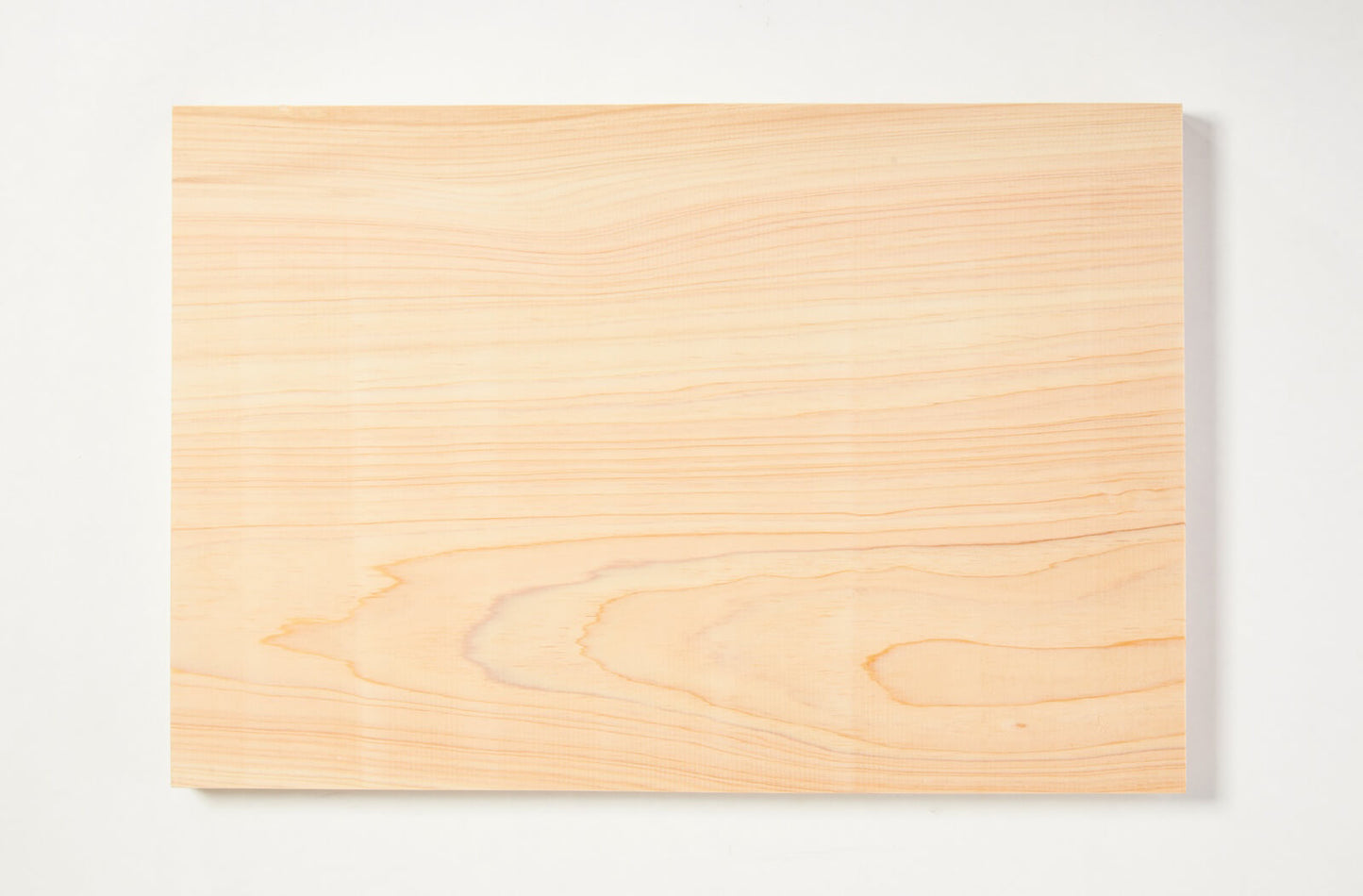


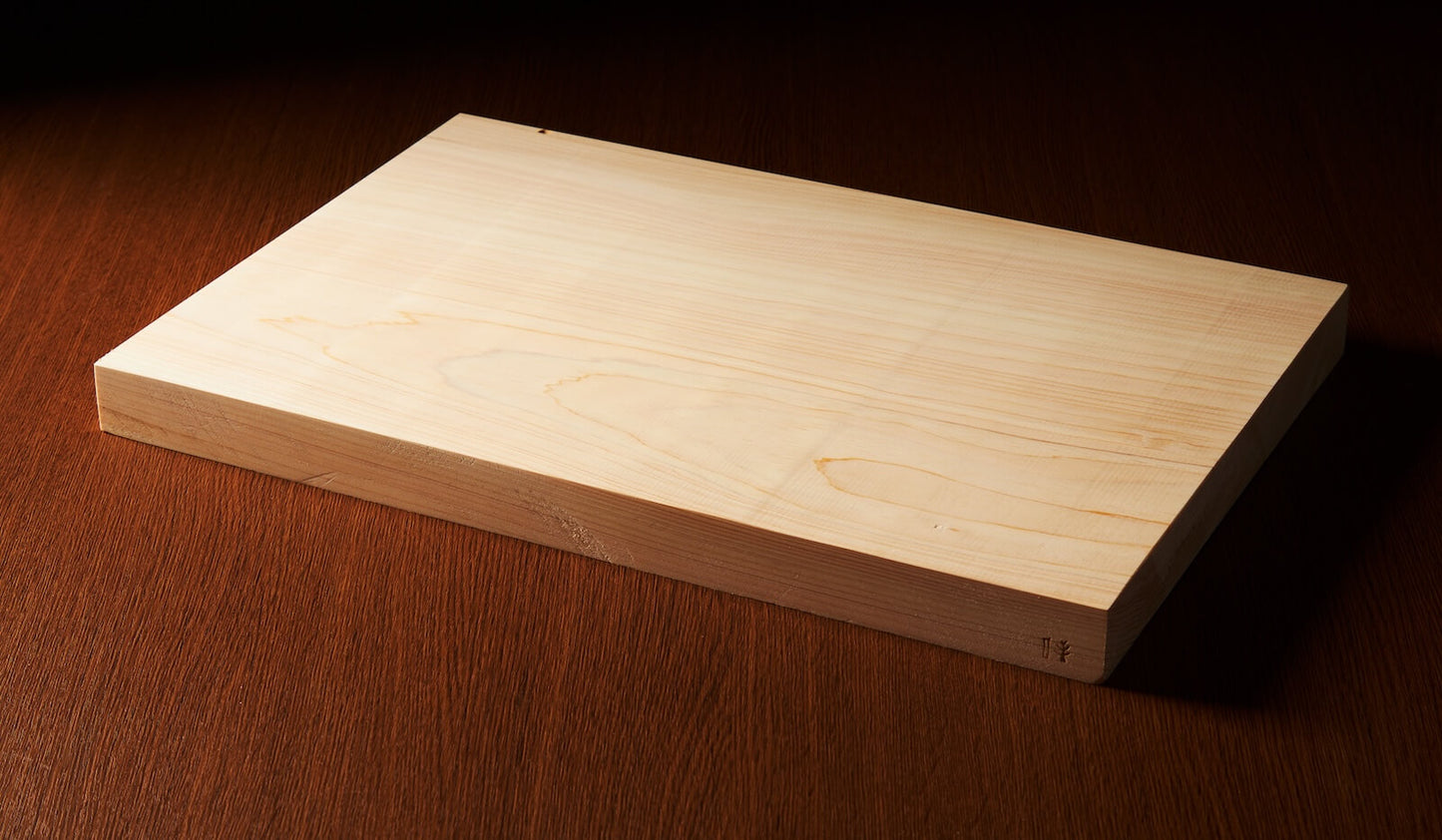
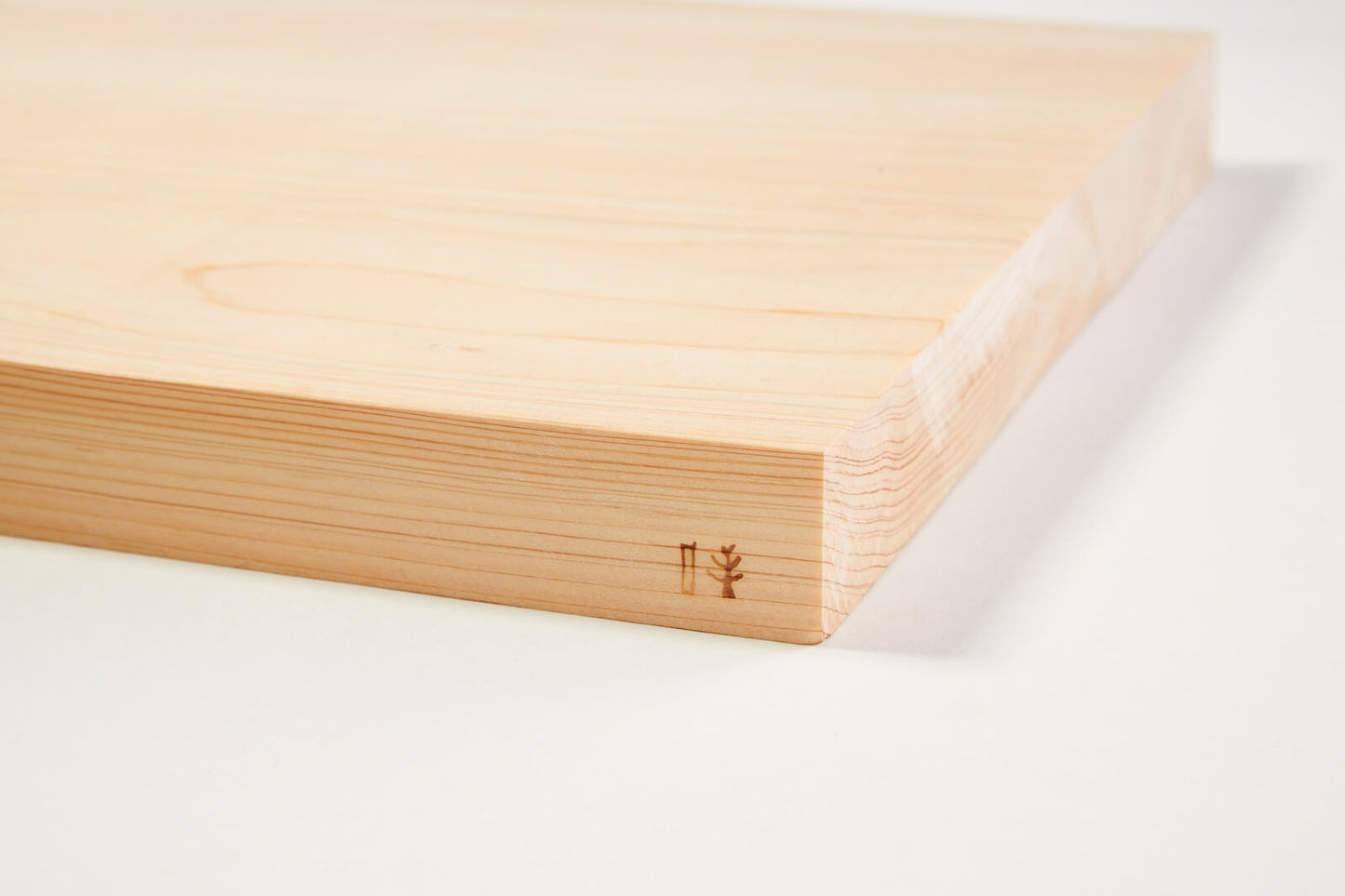

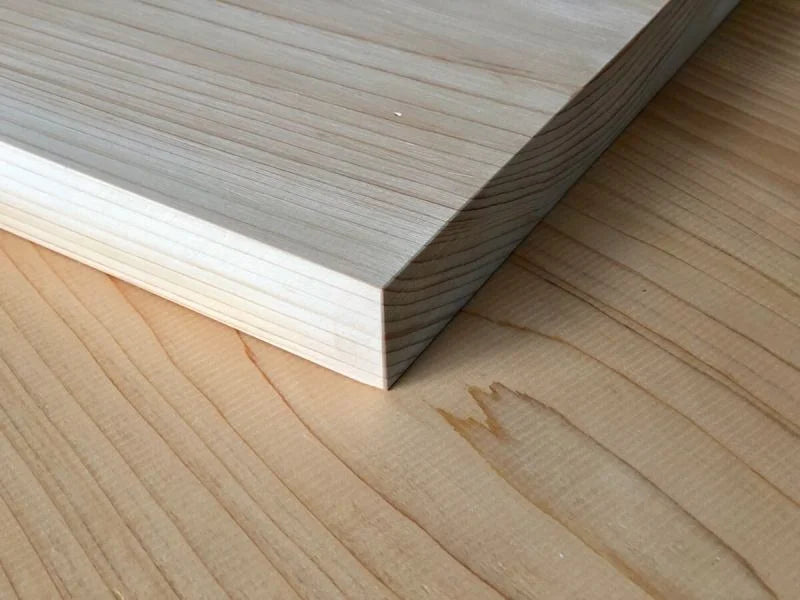



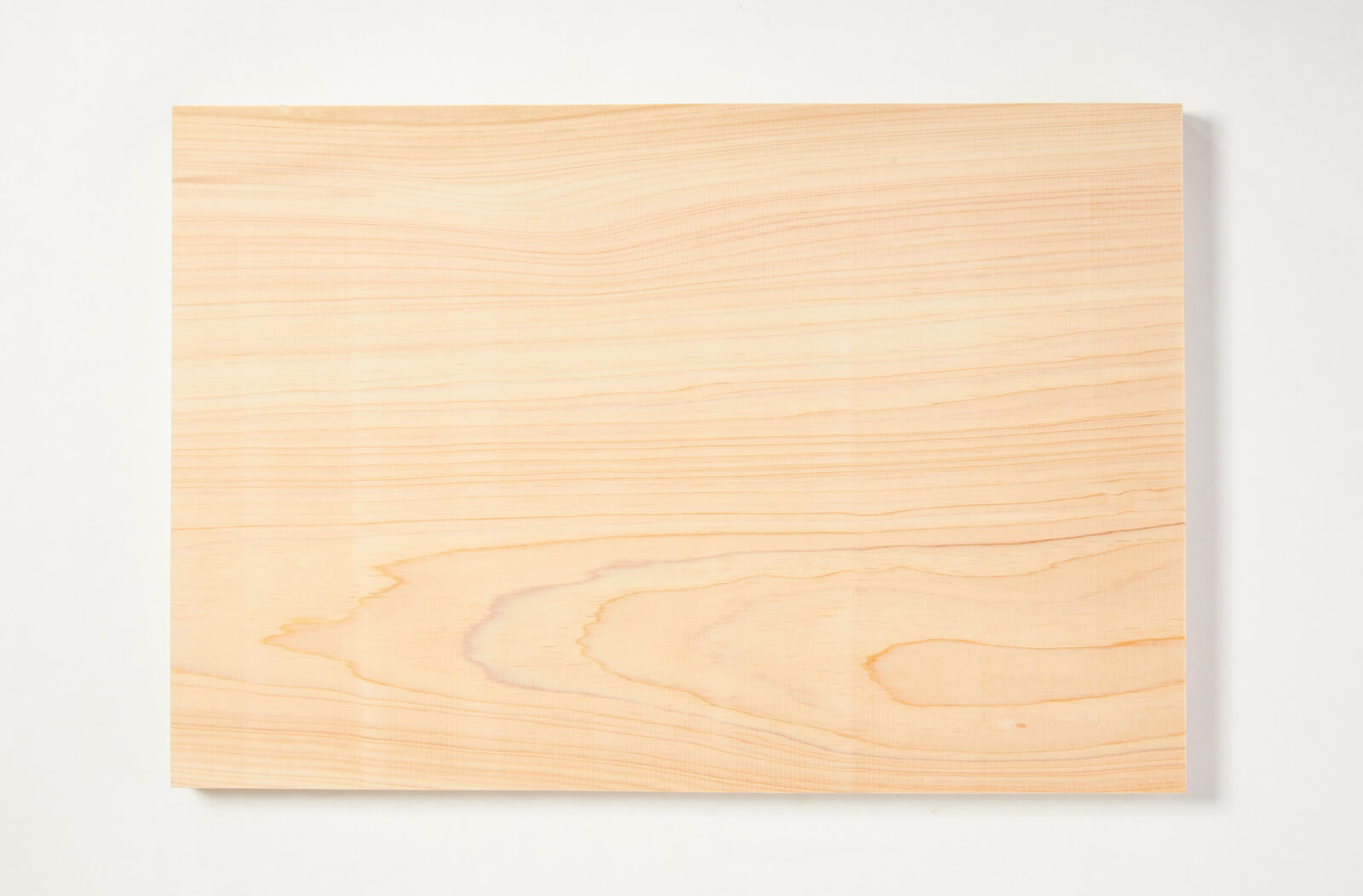
Do I have to wet it before use?
The reason for wetting the surface of a wooden cutting board with water before use is to prevent food odors and oil stains from sticking to it. We recommend that you wet the cutting board with water before use in addition to washing it with water after use in order to use it beautifully for a long time.


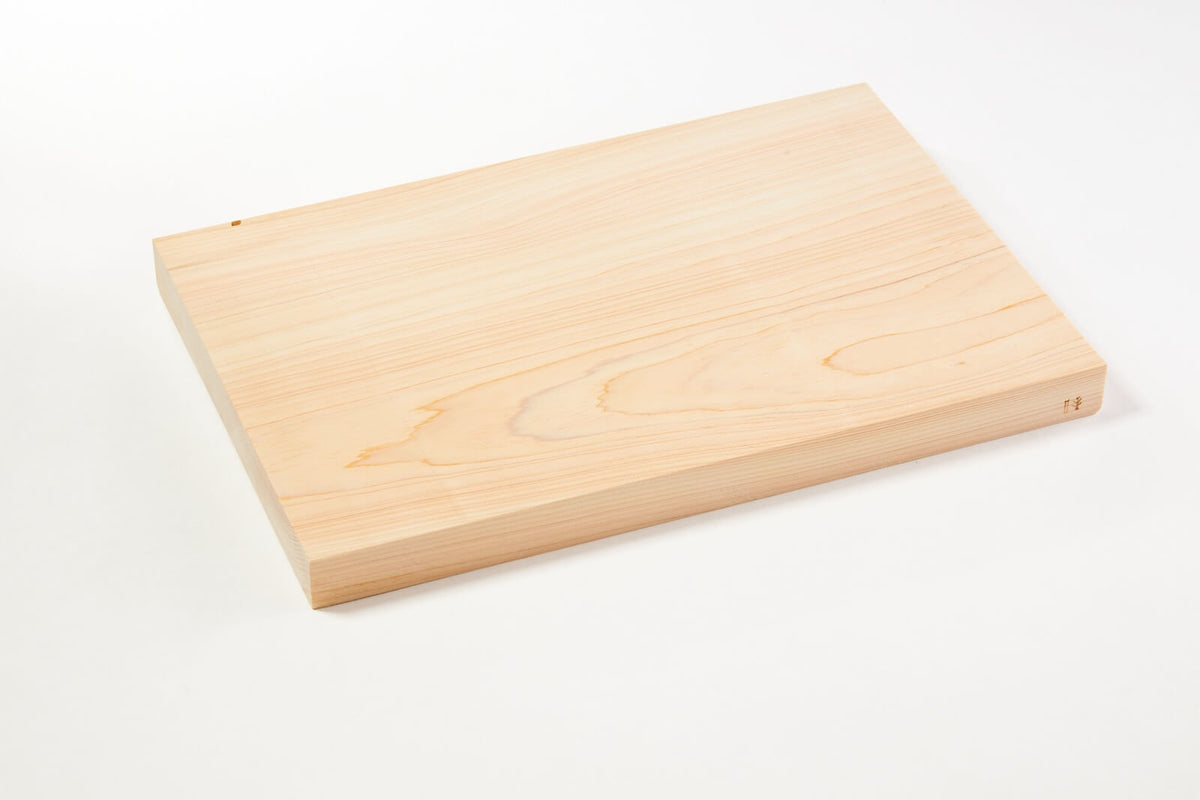

Can I put it in the dryer?
Wooden cutting boards should not be placed in a dryer. It may cause splitting or major warping. Also, do not expose them to direct sunlight.
Can I use bleach?
Do not use bleach. It will cause discoloration and darkening.

Can I use it as a pot stand?
It is tempting to put hot pots and pans on the wooden cutting board as a potholder, but please do not put the pots and pans on the wooden cutting board after cooking. The pots and pans will leave black marks on the wooden cutting board, which will later become moldy. It will also cause splitting and warping.










